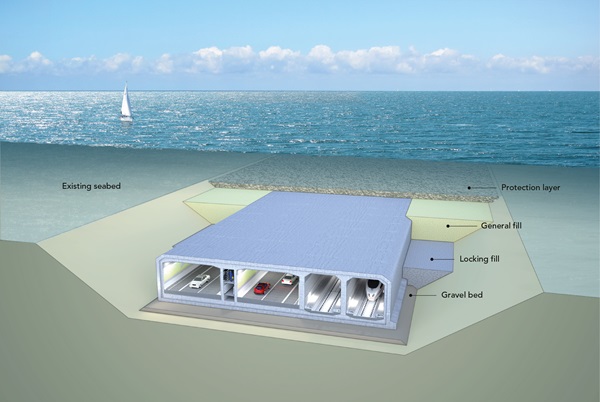Comprehensive EIA study for Fehmarnbelt Fixed Link sent to public hearings
We provided significant input to the comprehensive Environmental Impact Assessment (EIA) for the Fehmarn Belt project.
We provided significant input to the comprehensive Environmental Impact Assessment (EIA) for the Fehmarn Belt project. On 28 June 2013, the Danish Ministry of Transport (MOT) – the project owner – released the comprehensive baseline and impact assessment documentation for the public EIA hearing in Denmark.
This documentation consisted of:
- around 50 background reports in English
- a 1,600 page EIA report in Danish
- a non-technical summary
- a report on cross-border impact, in accordance with the Convention on Environmental Impact Assessment in a Transboundary Context (Espoo Convention)
The Fehmarnbelt project aims to build a fixed link between Northern Germany and Denmark across the Fehmarnbelt. The public hearings are an important milestone. They mark the completion of more than four years of intensive work by us and our partners as consultant to Femern A/S on marine EIA issues. The MOT tasked Femern A/S with designing and planning the fixed link.
The implementation of both Danish and German requirements for the impact assessment has been one of the primary challenges of the project. To assist with this, we worked intensively with our partners and Femern A/S to examine the environmental impacts from the construction works and permanent structures on:
- hydrographical, seabed and coastal morphology (with Fehmarnbelt Fixed Link Hydrographic Services consortium)
- marine flora and fauna (with Fehmarnbelt Fixed Link Marine Biology Services consortium)
- marine birds (with Fehmarnbelt Fixed Link Bird Services consortium)
- mammals (with Fehmarnbelt Fixed Link Marine Mammal Services consortium)
As part of the EIA, we conducted baseline monitoring for two years, as well as an in-depth impact assessment of an immersed tunnel, a suspension bridge and a bored tunnel. State-of-the-art monitoring techniques and methodologies, as well as mathematical modelling were key instruments in determining baseline conditions and impacts. During the project, we:
- developed new techniques in hydrographical monitoring with buoys, habitat mapping and radar and telemetry observations of bird migration
- conducted enhanced modelling of flow blocking & mixing effects from pier structures
- improved modelling of sediment spill
- improved modelling of impacts on marine biology and birds
The comprehensive baseline and impact studies are the basis for the final approval by the Danish and German authorities of the preferred solution: an immersed tunnel. Our comprehensive and in-depth EIA study also facilitates a smooth public hearing process.

©Femern A/S
Read more